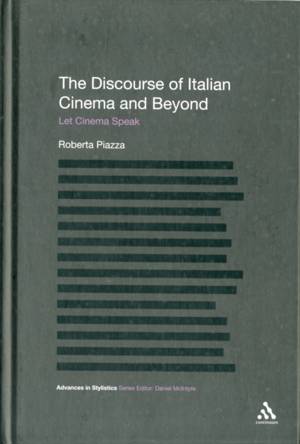
- Afhalen na 1 uur in een winkel met voorraad
- Gratis thuislevering in België vanaf € 30
- Ruim aanbod met 7 miljoen producten
- Afhalen na 1 uur in een winkel met voorraad
- Gratis thuislevering in België vanaf € 30
- Ruim aanbod met 7 miljoen producten
Zoeken
€ 390,45
+ 780 punten
Uitvoering
Omschrijving
Roberta Piazza's book is a linguistic investigation of the dialogue of Italian cinema covering a selection of films from the 1950s to the present day. It looks at how speech is dealt with in studies of the cinema and tackles the lack of engagement with dialogue in film studies. It explores the representation of discourse in cinema -- the way particular manifestations of verbal interaction are reproduced in film. Whereas representation generally refers to the language used in texts to assign meaning to a group and its social practices, here discourse representation more directly refers to the relationship between real-life and cinematic discourse. Piazza analyses how fictional dialogue reinterprets authentic interaction in order to construe particular meanings. Beginning by exploring the relationship between discourse and genre, the second half of the book takes a topic-based approach and reflects on the themes of narrative and identity. The analysis carried out takes on board the multi-semiotic and multimodal components of film discourse. The book uses also uses concepts and methodologies from pragmatics, conversation analysis and discourse analysis.
Specificaties
Betrokkenen
- Auteur(s):
- Uitgeverij:
Inhoud
- Aantal bladzijden:
- 272
- Taal:
- Engels
- Reeks:
Eigenschappen
- Productcode (EAN):
- 9781441136978
- Verschijningsdatum:
- 14/02/2011
- Uitvoering:
- Hardcover
- Formaat:
- Genaaid
- Afmetingen:
- 157 mm x 234 mm
- Gewicht:
- 544 g

Alleen bij Standaard Boekhandel
+ 780 punten op je klantenkaart van Standaard Boekhandel
Beoordelingen
We publiceren alleen reviews die voldoen aan de voorwaarden voor reviews. Bekijk onze voorwaarden voor reviews.








